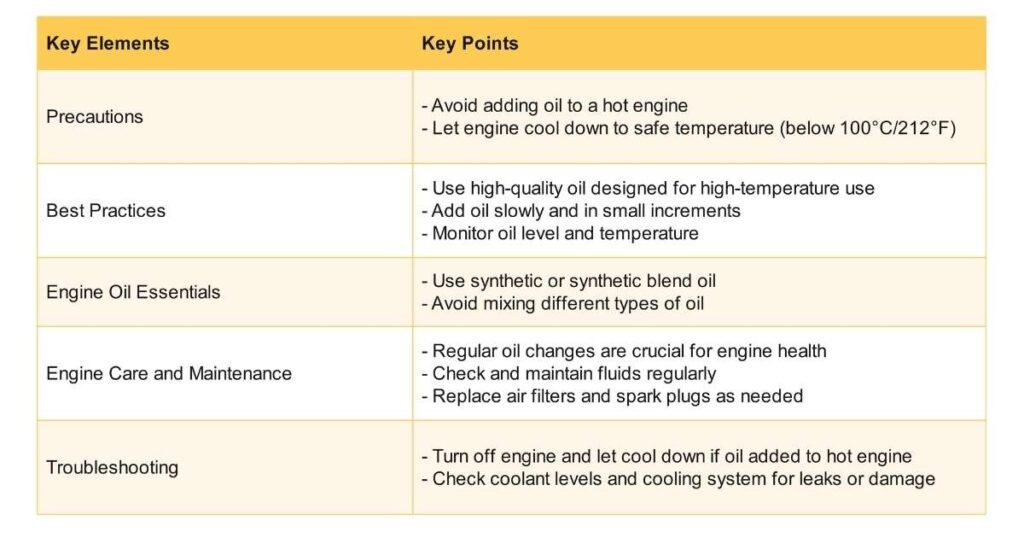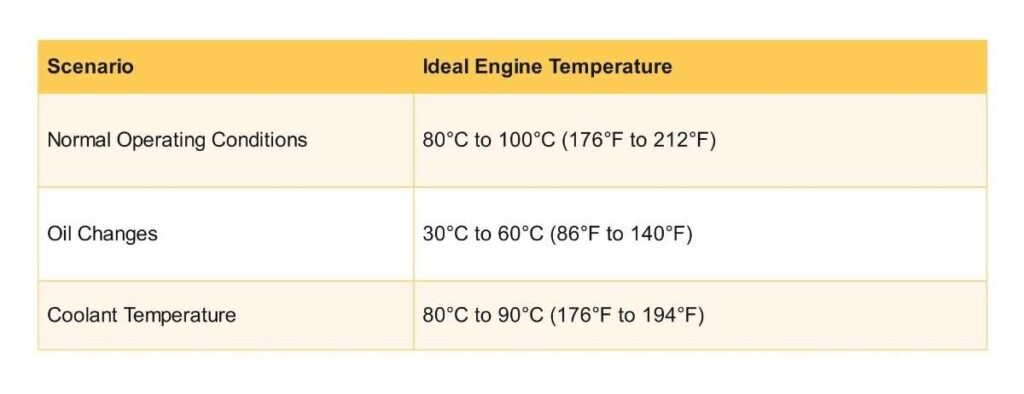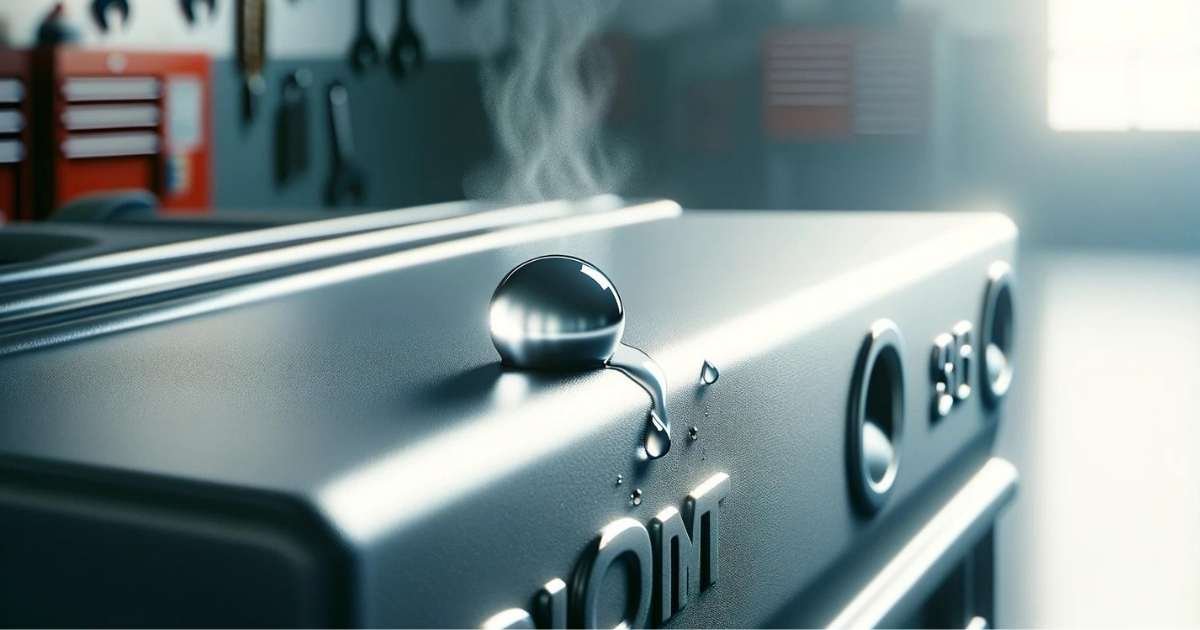As a seasoned automotive writer, I often get asked if it’s okay to add oil to a hot engine. The answer is a bit complex—it really depends. Before diving into whether you should add oil to a hot engine, it’s important to think about safety and the right approach.
Let me guide you through this with some essential tips on how to handle hot engines and oil, ensuring your car continues to run smoothly.
In this article:
Can You Put Engine Oil in a Hot Engine?
The answer is a qualified no. While adding a small amount of oil to a warm engine typically won’t cause serious harm, it’s generally not recommended. Adding oil to a hot engine can be tricky. This is because hot oil is thinner and harder to measure accurately. When you check the oil level on a dipstick, it might not show the true level, leading to overfilling, which can damage your engine.
Another concern is the risk of burns. Engine parts and oil get very hot, and touching them can cause serious burns. It’s safer to wait until the engine cools down a bit before you add oil. This minimizes the risk of getting burned.
There’s also the issue of oil foaming. When you mix hot oil with cooler oil, it can foam up. This foamy oil isn’t as good at lubricating the engine parts as it should. That’s why it’s best to wait about 15-20 minutes for the engine to cool down before adding oil.
Always check your car’s owner’s manual too. It might have specific advice on how long to wait before adding oil after your engine has been running. This can help you take better care of your car’s engine.
What are the Precautions that took place for adding oil to a hot engine?
Safety first! Whenever you’re working around your engine, whether it’s hot or not, there are important steps to follow to stay safe.
Make sure you park on a level surface. This helps you get an accurate reading when you check the oil level.
Always engage the parking brake. This keeps the car from rolling when you don’t expect it.
Remember to turn off the engine. Never add oil to a running engine as it can be dangerous and give you incorrect measurements.
Is it Safe to Add Oil to a Hot Engine?
Adding oil to a warm engine is usually fine, but it’s better to wait a bit. This is because letting the engine cool for about 15 to 20 minutes makes it safer for you. Hot oil can burn you, so it’s good to be careful.
Also, waiting helps you get a more accurate reading of how much oil is actually in the engine. Oil expands when it’s hot, so if you check it right away, the reading might not be right.
What Happens When You Put Oil in a Hot Engine?
Adding oil to a hot engine isn’t a disaster, but it can cause some problems. If you add oil when the engine is hot, the oil takes up more space. This can make you think your engine has enough oil when it really doesn’t. It’s easy to put in too much oil if you don’t wait for it to cool down a little.
Also, touching hot oil by accident can burn you. It’s safer to let the engine cool off a bit before you add oil. This way, you avoid burns and make sure you’re putting in the right amount of oil.
What are the Risks of Adding Oil to a Hot Engine?
The biggest risks happen when you ignore simple safety steps. Overfilling your engine with oil can hurt the engine seals. This might cause leaks or make the oil burn off in places it shouldn’t.
Also, if you spill or splatter oil, it can catch fire if it lands on the hot parts of the engine. This is really dangerous because it can start a fire right in your engine. So, it’s very important to be careful and make sure you’re filling the engine with oil the right way.
What are the Best Practices for adding Oil to Engine Oil?
For the best safety and to make sure you do things right, follow these tips. Let your engine cool down for about 15 to 20 minutes. This helps keep you safe from burns.
Make sure your car is parked on a flat surface and that the parking brake is on. This stops the car from moving while you work. Always wear gloves and something to protect your eyes.
When adding oil, use a funnel to prevent spills. Add the oil little by little and keep checking the dipstick to see how full it is.
Be sure not to put too much oil in. If you do spill some, clean it up with a rag right away. This keeps your car and the environment clean and safe.

How to Add Oil to a Hot Engine Safely?
Once you find out your oil level is low, here’s the safe way to add oil to your car.
First, park your car on a flat surface and turn off the engine. It’s important to let the engine cool down for at least 15 to 20 minutes before you start.
Next, open the hood and find the oil filler cap and dipstick. If you’re not sure where they are, check your owner’s manual. Use a lint-free cloth to clean the dipstick before you use it.
Carefully remove the oil filler cap. Add oil a little at a time, about half a quart, then check the level with the dipstick. Wipe the dipstick clean each time to get a good reading.
Keep adding small amounts of oil and checking until you reach the full mark on the dipstick. Make sure not to overfill. If you need to add oil to a hot engine, be very careful. Turn off the engine and wait 5 to 10 minutes for it to cool down a bit.
Follow all the safety steps I mentioned before. Start by adding a small amount of oil, then check the dipstick again. Repeat until the dipstick shows a full level.
Always dispose of used oil properly. Never pour it down the drain. Remember, it’s always safest to wait until the engine has completely cooled down.
What is the Oil Viscosity for Hot Engine Top-Offs?
Choosing the right oil viscosity for topping off is important. My owner’s manual lists the best type for my car’s engine. It suggests specific oils to keep my engine running smoothly.
Lower viscosity oils are thinner. They flow well in heat, making them good for a hot engine. But in extreme heat, they might not protect the engine as well.
Multi-viscosity oils are handy. They work across different temperatures, which is great for varying weather. Many cars do well with 5W-30 or 10W-30.
Synthetic oils are top-notch for heat. They stay stable and protect my engine better than others. When my engine is hot, I consider using synthetic or synthetic blend oils. These oils maintain their thickness and keep my engine safe.
To sum it up, I always check my manual and choose an oil that suits my car best, especially in hot conditions. This keeps my engine in good shape and prevents any problems.
Summary of All Key Points for Oil Change in Hot Engine:

What is the Ideal Engine Temperature for Oil Changes?
Topping up oil in a warm engine works in a hurry, but it’s better to change the oil when the engine is warm, not hot. A warm engine makes the oil flow better, which helps get all the old oil out. This is because warm oil can move more freely and takes any dirt and sludge with it.
It’s best to change the oil when the engine’s temperature is between 30°C (86°F) and 60°C (140°F). This range helps the oil drain well without harming the engine. So, remember, the ideal temperature for an oil change is important for keeping your car running smoothly.
Here is a table summarizing the ideal engine temperatures for different scenarios:

What to Do if You Accidentally Add Oil to a Hot Engine?
If you’ve overfilled your engine with oil, don’t worry. Just turn off the engine. Then, look in your car’s manual to find out how to remove the extra oil. You might need an oil extractor pump. Remember, you shouldn’t drive your car if it has too much oil.
How to Fix Overheating Issues in Your Engine?
If your engine is overheating, it’s a big problem. This could be because of low coolant, a clogged radiator, or a broken thermostat. You should see a mechanic to find out what’s wrong and get it fixed.
Common Engine Problems Caused by Improper Oil Changes
Not changing your oil the right way can cause lots of issues. It can lead to more wear and tear, and sludge build-up, and your engine might not perform well. It can also cause your engine to overheat. Make sure to follow proper oil change procedures to avoid these problems.
Conclusion
Adding oil to a hot engine can be tricky, but knowing the right steps helps a lot. It’s best to let the engine cool down fully first. This is the safest way to check the oil.
Make sure to stick to a regular maintenance schedule and use the right oil. This keeps your engine running well for a long time. If you’re unsure about anything, ask a good mechanic for help. They can give you the best advice.
